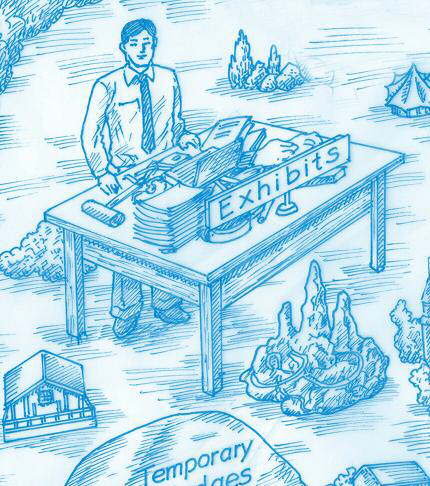Exhibits: Never Mind the Quality, Feel the Width
| Publication year | 2016 |
| Citation | Vol. 29 No. 1 |
| Author | By John Derrick |
By John Derrick
The law is no stranger to fictions. For example, it indulges the notion that bells can be unrung when witnesses blurt out things they aren't meant to say in front of juries. As the U.S. Supreme Court candidly admitted, "[t]he naive assumption that prejudicial effects can be overcome by instructions to the jury, all practicing lawyers know to be unmitigated fiction." (Krulewitch v. United States (1949) 336 U.S. 440, 453, citation omitted.) Yet the law nonetheless presumes that such instructions are followed.
[Page 36]

Some legal fictions can serve to achieve just or sensible results where acknowledging reality might lead to less desirable outcomes. But other fictions can't be explained by some noble purpose.
[Page 37]
One such fiction is the notion that hefty wads of exhibits in law-and-motion proceedings always get read by busy judges. The fact is they don't. Indeed, the court system would grind from its presently clogged pace down to a virtual halt if we insisted that everything that gets filed be carefully read.
I'm not talking here about reasonable quantities of exhibits. Rather, I'm talking about bloated sets, crammed with stuff in an effort to create some sense of heft. It's like the tailor who tries to reassure the skeptical customer, "Never mind the quality, feel the width."
Particularly irritating is when the accompanying written materials cite to only small portions of the piles of paper filed as exhibits — raising the question about the purpose of the remainder. In summary judgment motions, for example, it is common to have hundreds or even thousands of pages of exhibits, but with only a small proportion cited in the separate statement and referenced in the points and authorities.
Things really get bad when lawyers include as exhibits previous filings containing their own exhibits — even if not all the exhibits of the earlier filings are relevant. And this frequently leads to exhibit inflation — i.e., when, with successive filings, the identical materials crop up repeatedly as exhibits within exhibits. Or as exhibits within exhibits within exhibits.
The sickness then spreads to the appeal, when parties prepare appendices with little, if any, effort to filter out duplicative and irrelevant materials from exhibits. (And, to be clear, I'm not talking here about trial exhibits, but about exhibits to papers filed in law-and-motion proceedings.)
On appeal, there is, at least, the...
To continue reading
Request your trial
